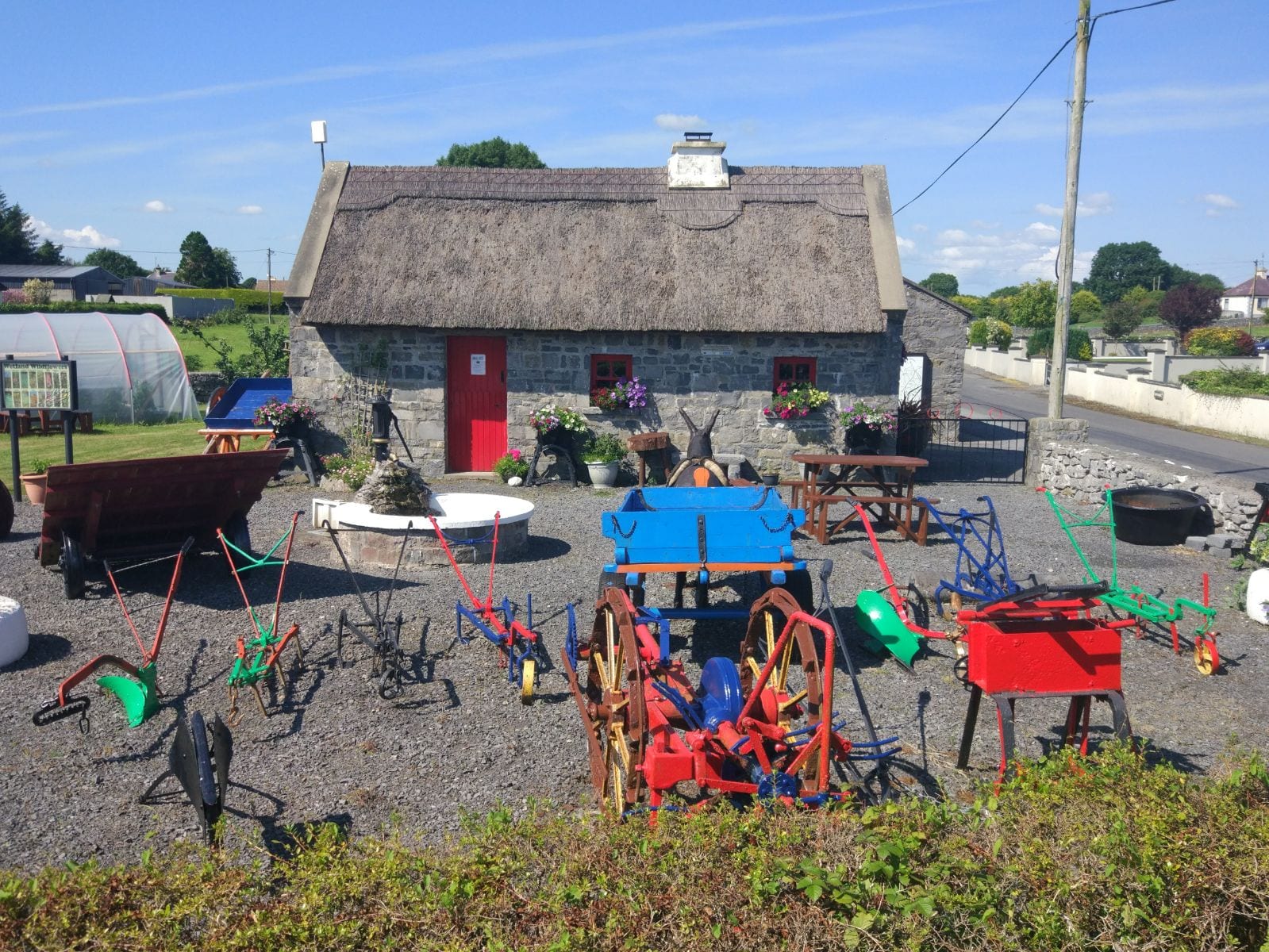The Heritage Cottage
The cottage was built using local limestone and has been thatched using Turkish reeds. In the past, local phragmites reed would have been harvested from nearby wetland. This durable material was abundant and freely available, and had a working life of ten years or so, which could be extended if the reeds were soaked in hydrated copper sulphate.
Copper sulphate, or bluestone, is an effective fungicide that also kills many plants including harmful algae, prohibits effective root growth, and has powerful anti-microbial qualities. The use of bluestone to protect potato crops from potato blight (a major contributor to the Irish Famine) is now discouraged, as it leads to excessive copper residue in the soil.
Those living in stone cottages like this soon learned that south facing walls grew warm in the heat of the sun and were great places to grow a few flowers. Cracked iron pots made great planters, and the fruit or flowers grown would add a touch of luxury to an otherwise spartan existence.
The traditional half-door allowed daylight and fresh air into the house whilst keeping hungry livestock out and crawling babies in. It also served as a comfortable leaning post for the inhabitants as they looked out on the day.
While most traditional cottages would also have a back door, this model does not. The windows were kept small, for householders could barely afford to pay their basic rent, let alone the much despised window tax. From 1696, under the rule of British King William III, all homes were assessed for taxes by counting the number and size of windows, which could be measured from the outside without intruding into the dwelling. Poor people living on poor diets without adequate ventilation or clean water often developed highly contagious and lethal typhoid fever (Salmonella typhi), giving rise to the term 'Typhoid tax'.
Opposite the front door of the cottage is the outshot, or the hag, where the old woman of the house would sleep. In some parts of the west a woman who lived longer than 70 years was deemed to be a witch and could not be buried on consecrated ground.
Since its official opening in July 2004 many visitors have been through the Heritage Cottage door.
It has also been the venue for community meetings and social occasions.
